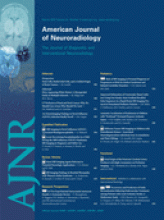Abstract
BACKGROUND AND PURPOSE: Vertebroplasty is known for its high leakage rate compared with kyphoplasty. In recent preclinical studies, high-viscosity cements were shown to significantly enhance the uniformity of cement filling and decrease the incidence of leakage in cancellous bonelike substrates compared with low-viscosity cements. In this study, the incidence and pattern of cement leakage by using a new high-viscosity cement (Confidence spinal cement system) was compared with that of standard kyphoplasty.
MATERIALS AND METHODS: Postoperative radiographs of patients treated with either kyphoplasty or Confidence were analyzed for cement leakage by using a stringent and thorough 4-point scale (none, minimal, moderate, or severe). When leakage was observed, the location of the cement leakage was also recorded and described as diskal, venous, paravertebral, or epidural. Sixty-two consecutive patients with 112 treated levels were included in this retrospective review. There were 46 kyphoplasty- versus 66 Confidence-treated levels, which ranged from T3 to L5.
RESULTS: The average vertebral collapse reached 27.9 ± 20.7% in the Confidence group versus 25.0 ± 19.1% in the kyphoplasty group. There was no or mild leakage in 92% of Confidence and 91% of the kyphoplasty cases (mild, 39% Confidence versus 50% kyphoplasty). Severe leakage was only reported in 1 (2%) Confidence and 1 (2%) kyphoplasty case. In both cases, the severe leakage was found in the disk space. No significant leakage that required any surgical intervention was noticed.
CONCLUSIONS: This finding confirms prior observations that highly viscous cements may increase the safety of vertebral augmentation techniques compared with less viscous cements. The high-viscosity Confidence cement results in a leakage rate comparable with that of kyphoplasty.
Abbreviations
- PO2
- partial pressure of oxygen
- VCF
- vertebral compression fracture
- Copyright © American Society of Neuroradiology












